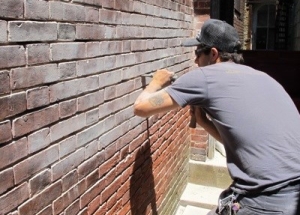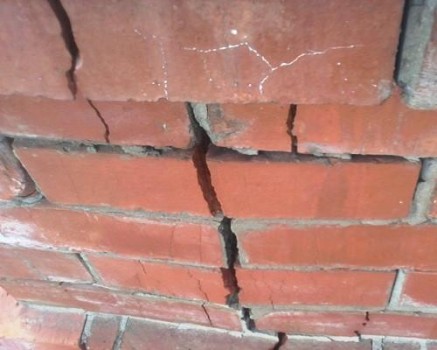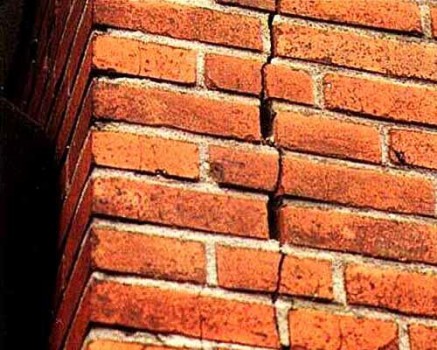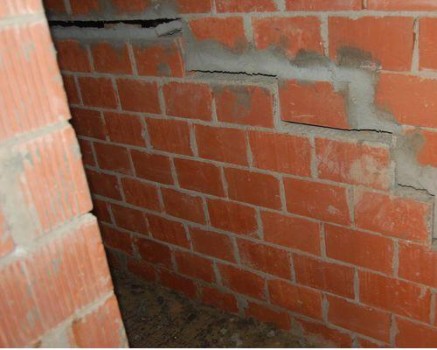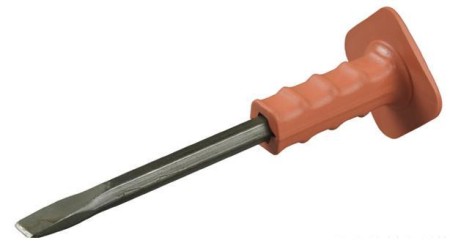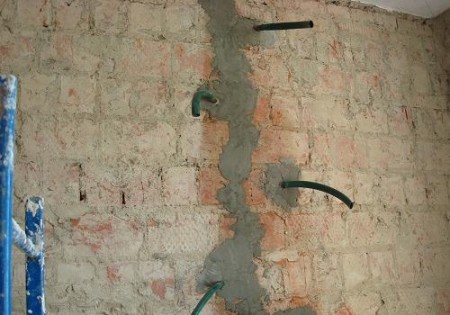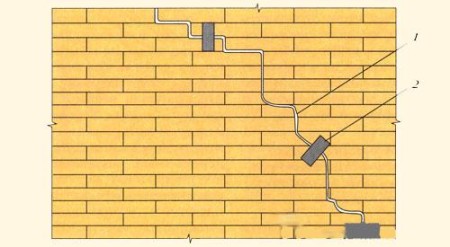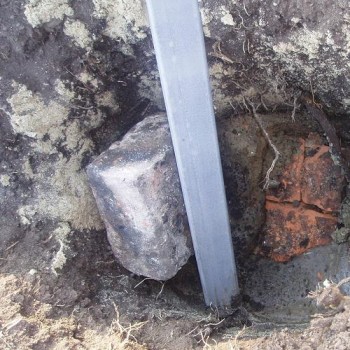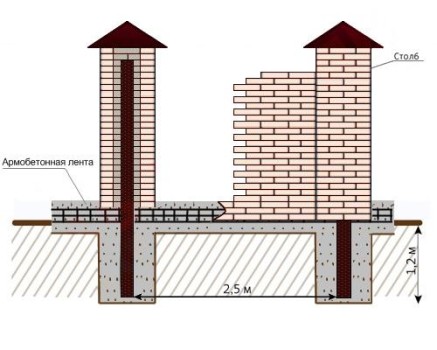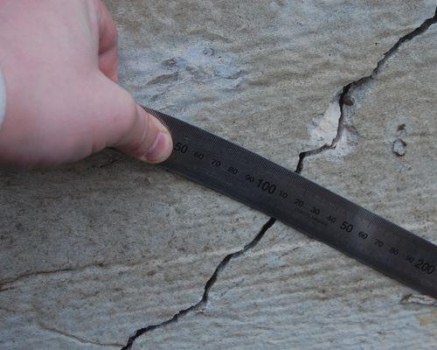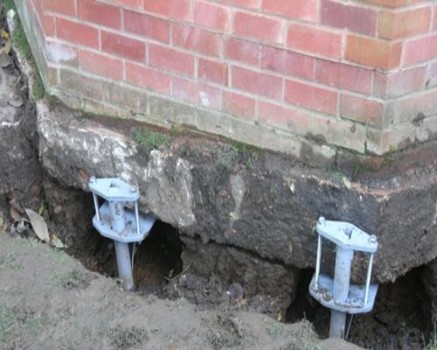Fence around the country plot is, first of all, the boundary of your private property, which protects it from unwanted "guests". But, in addition, a well-groomed, beautiful fence around the country plot can be a real decorative decoration, a source of pride for the owner of the villa. Like any artificial structure, the fence needs care and regular maintenance. In the framework of this publication, we will talk about the brick fence, more precisely about what kind of damage it is most susceptible to, and how to eliminate them yourself.
Content
Why there is a need for repair
It should be noted, the reasons for which the fence begins to deteriorate, should be eliminated at the initial stages of construction. For example, incorrectly filled or installed foundation, unjustified savings on cement, poor quality brick - all this can lead to the destruction of the structure.
A good brick fence can last long enough - 25 and even 30 years, but even a good brick eventually inevitably begins to "grow old". Temperature changes, atmospheric precipitation cause the material to gradually deteriorate and crumble, cracks appear in the fence. The appearance of cracks is already a signal to urgently need to repair a brick fence. Most often, the cracks are small, and usually do not increase in size, but if you notice that the damage is increasing, it is urgent to repair this section of the fence.
There are several reasons why damage occurs in a brick fence:
Inside the structure of moisture. In winter, the water freezes and destroys the brickwork, during the warm season the moisture evaporates intensely, which leads to the appearance of microcracks in the brick, which subsequently leads to more significant damage, which entails repair of the brickwork.
- Improper waterproofing of the base of the fence or its absence. If the waterproofing layer is broken or missing, the brickwork begins to absorb moisture, which again leads to damage.
- Use in the construction of different brands of bricks. For example, in the construction of some elements or entire sections of the fence, hollow bricks are used, which, with a prolonged load, crumbles and crackles.
- Use of bricks that are not resistant to strong high temperature changes. This is an actual reason for those regions of the country where there are severe frosts.
- Low-quality foundation. This includes, for example, the incorrectly calculated thickness of the foundation, the depth of its freezing, the absence of the necessary layer of sand from the sand and gravel.
Types of damage and how to eliminate them
There are several types of brick masonry brickwork damage:
- Cracks in the brick.
- Negligence and the assumption of errors in the process of mounting pillars.
- Low-quality foundation.
The most common problem is cracks in the brickwork, so let's start with it. So, first you need to carefully inspect the entire fence to make sure that there are no more cracks anywhere. All detected defects should be marked by applying a small layer of cement mortar to them.
After this, you need to wait about a week, and inspect the cement stain.
If during this time there are no chips and cracks on it, a thorough repair is most likely not required. But if the cracks did appear, repair of the damaged area should be approached thoroughly, since such destruction is most often associated with errors in the construction process.
Cracks in the fence can be conditionally attributed to two categories: active and passive.
Passive cracks do not grow for a long time. They appear mainly because of the influence of environmental factors. Such a crack is usually cemented with cement mortar or the damaged brick is changed, if possible. It should be noted that the solution for cracking should be as strong and have the same basis as the solution that was used in the construction of the fence.
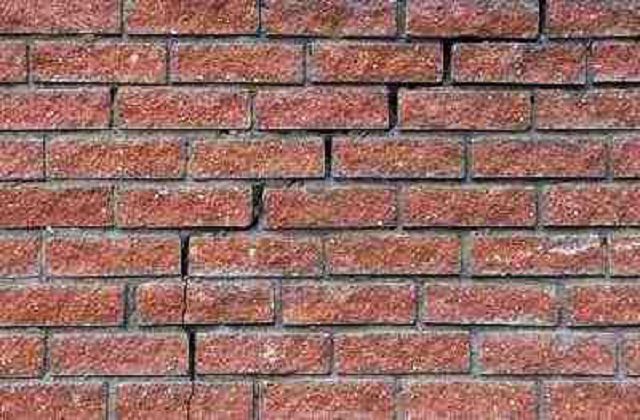
If the cracks are small, and the number of them does not increase, then repairing the fence with our own hands will not take much time and money.
Active cracks represent a rather serious problem, as they gradually expand. In this case, you need to pinpoint the source of the problem and localize it. If this is not done on time, the repair will cost the owner a tidy sum and take a long time. In addition, such problems arise because of errors in construction, so if you did not build a brick fence with your own hands, invite to inspect and determine the cause of the destruction of a specialist.
Before you begin to eliminate the cause of the appearance of active cracks, you first need to find the point at which the greatest stress and load is created on a given fence site. After the place is determined, a metal rod is assembled into the brickwork, which serves as a support for supporting the repaired area. Next, the damaged fence is sealed. It must be remembered that only the metal sheathing itself will not save the fence from destruction, and the problem will be solved only for a short time.
In order not to frighten the owners of summer cottages, it should be noted that active cracks appear mainly in very old fences. The use of modern materials and technologies practically completely eliminates the appearance of such problems. And in old fences, the appearance of active cracks is not fatal for a fence, since the load is usually distributed over the entire area, rather than at a single point.
However, if the problem is still serious, there are several methods for eliminating it.
To make it easier, we classify the cracks by the type of their appearance:
- Small surface cracks.
- Large cracks in the brickwork, can weaken the entire structure.
- Cracks in the outer corners of the masonry.
- Serious gaps in the masonry.
Small cracks are eliminated quickly and easily. To do this, you need a "scarlet" - a chisel with a wide handle or a piece of steel wire welded to the side.
With the help of a scarlet and a hammer, the crack is widened a little, carefully cleaned of dust and debris, washed with water.
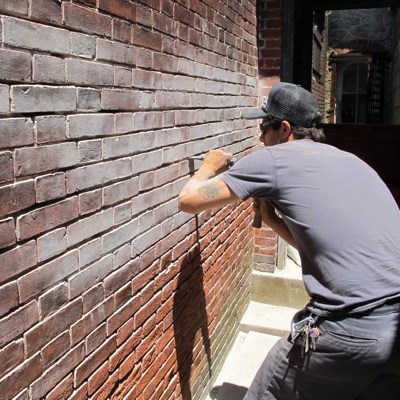
Then the crack is tightly filled with cement mortar. After the solution has hardened, its surface can be covered with a layer of paint that mimics the color of the brick itself. Thus, you can not only eliminate the crack, but also give the fence the old look. This method is suitable only for passive cracks, the width of which does not exceed 1 cm.
Cracks of a larger size require more thorough repairs. In the process of eliminating such cracks, the perforator makes a hole in the masonry, into which a tube is injected for pumping into the cement slurry.
When the crack reaches a width of more than one centimeter, then it needs not only to expand, it may be necessary to replace the whole brick. If the crack is long, then a special lock is used to remove it.
This can be a piece of profile or a steel strip of the necessary length and width, which is fixed to the masonry with the help of dowels. The dowels do not adhere well to the brick, they need to be wedged. To do this, you can use wooden chips, which are hammered into the gap between the brick and the dowel. Thus, it is possible to prop up the dowel well without damaging the brick itself.
With this method, the source of destruction is localized quickly enough, but at the same time the appearance of the fence deteriorates. If you want to preserve the aesthetic appearance of the fence, you will have to replace the damaged bricks.
Cracks in the outer corners pose a serious threat to the integrity of the masonry. As a temporary measure, you can recommend the installation of steel liners, which are bent towards the wall itself. The overlays are fastened with dowels.
If the damage is significant, then it is necessary to make a partial replacement of the masonry. For an experienced mason to do such a job is easy, you just need to strengthen the upper part of the wall with a crossbar so that it remains stable during the restoration work.
Elimination of damage to pillars
Another serious problem that the owner of a brick fence may face is a mistake in installing the pillars. Particularly prone to damage are the poles on which the gates are held. Inside the brick column, a metal rod is installed, which has several pins on the surface. The construction of this type is rather unreliable and often leads to damage to the brickwork. To avoid such problems, there is a fairly simple method - the installation of an additional fastening for the gate, which will avoid damage and significantly strengthen the design of the fence.
For this, metal pipes are installed in the ground to a depth of up to one meter and are filled with a mixture of cement, sand and crushed stone. A third pipe is horizontally welded to them, which passes under the ground under all gates and provides their additional support.
In the event that the fractures are strong and can not be eliminated, the poles must be completely repaired with full compliance with the technical requirements.
Support pillars are of pile and linear type. When installing piles, a metal support is installed in the ground to a depth of one meter, and then it is concreted. The base thus obtained is quite reliable and capable of withstanding high loads.
The linear type of the pillar is more reliable. First, the work is carried out in a manner analogous to the pile type. Before the beginning of pouring between the posts dig a groove depth of about 50 cm into it lay another pipe, and then weld it to each of the posts. The horizontally laid pipe will play the role of a stiffener. Sometimes instead of a horizontal pipe pour reinforced pile, as in the picture.
The columns of the linear type, of course, will cost a little more, but they are much more reliable and durable, and even with a bad foundation, the structure will not collapse.
Elimination of damage to the foundation
If the cause of cracks in your fence is a problem with the foundation, you can not do without serious repairs.
Causes, because of which the foundation shrinks, a lot:
- A small depth of the basement.
- Poor drainage.
- Insufficient foundation width.
- Poor quality of the solution.
- Violation of the technology of pouring monolithic structures.
Whatever the reason, the result always appears in the form of cracks. Find a problematic place is simple enough - the fence in this place begins to sink.
It should immediately be clarified that it is almost impossible to fix a bad foundation, it will still collapse. Therefore, most often the only way to solve problems of this type is to reset the entire fence, including the foundation itself. Naturally, the cost of repairing the fence in this case will be significant. As a temporary measure, metal piles welded from the channel in the shape of the letter "P" are used.
The upper crossbar plays the role of a support for a weak foundation. The length of the side supports, which rest against the ground, should be not less than 20 cm.
When installing a metal pile, there is no point in pouring concrete, as shrinkage will occur even faster.
Finally, we consider it necessary to warn that before making a brick fence with your own hands, remember - a poor-quality construction will cost you much more time. Therefore, if you are not completely confident in your knowledge and building skills, it is better to hire a team of specialists. Then, perhaps, you will not need the information given in this article.


